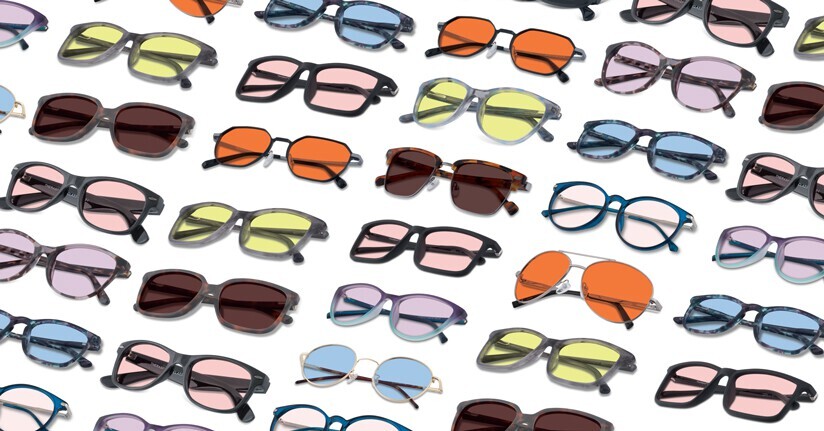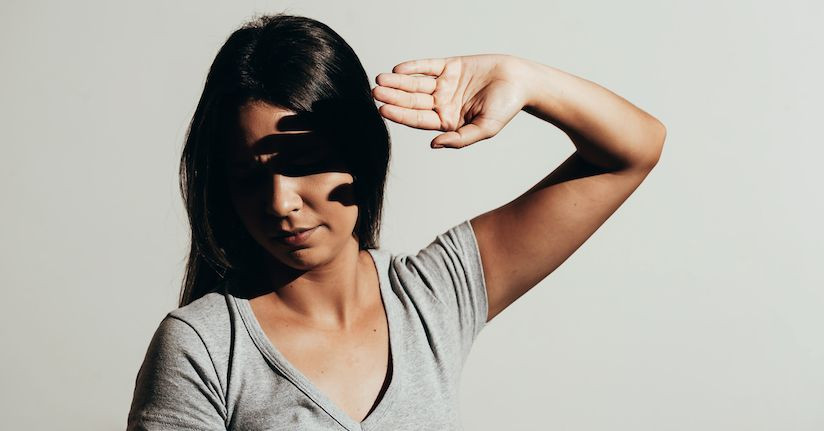8 Things to Avoid if You Have Light Sensitivity
Light sensitivity and chronic illness are often described in terms of what they take from us, including our ability to be present—at work, at home, and/or with family and friends. While it can sometimes be unhealthy to focus on what we cannot do, there are certain practices that it is better to avoid if you are light sensitive. We cover some of the most important ones below.
Don’t ignore your light sensitivity
The earliest steps in the chronic illness journey can be filled with uncertainty and anxiety. It might even be easy to pretend that your symptoms do not exist or that they will dissipate on their own; however, that can be a dangerous approach, particularly if you have never experienced strong photophobia before and/or it has come on all of a sudden. You always want to rule out other serious conditions and find the real reason for your light-sensitive responses—that is the best place to start in order to properly treat it. Plus, it can be hard enough just getting a proper diagnosis even when you can identify the symptoms, so there is no need to make it even harder by avoiding medical consultation.
Don’t use sunglasses indoors for prevention
If we have said it once, we have probably said it a thousand times: dark sunglasses are not an effective prevention tool for light sensitivity. By constantly sporting dark eyewear inside, you are dark adapting photoreceptor cells in your eyes and making it even harder to adjust to future light exposure. This means you likely will find you have a lower tolerance for any light as well as feel more pain and discomfort from light exposure than you would have before you started wearing those shades indoors. Now, it is *probably* okay to wear sunglasses inside for temporary relief during an intense attack or photophobic period, but take them off as soon as you can and do not get used to wearing them regularly.
Don’t stay too long in the dark room
The dark room can be an equally-complicated source for relief. On the one hand, it is often considered a go-to option for people with migraine, post-concussion syndrome and other disorders; but permanently-dim or low-light spaces can similarly dark adapt your eyes if overused, and many experts also believe it affects our emotional health. This “cocoon therapy,” as it is called, can lead to more anxiety and depression—emotional side effects which are already present at greater levels for those with chronic illness—and further delay recovery. This is in large part due to the fact that hiding in the dark room keeps us from the things that we love to do.
Don’t overdo it when you are in pain
Did we mention that there is a very delicate balance when you have a chronic condition with light sensitivity? Of course, you do not want to spend too long shuttering yourself away from daily life, but you also want to give yourself proper rest when you are in pain too. And there is no one-size-fits-all prescription; each person responds differently to pain, has different thresholds for activity, and has to find their own happy medium. Still, experts caution that pushing too hard at work, in school or with physical activity (after a head injury or during a migraine attack, for example) can do more harm than good. Instead, as patient advocate Julie Ryan recommends, pacing oneself with activities and obligations and/or incorporating additional rest may be better alternatives.
Don’t take medications that may worsen light sensitivity
Obviously, you always want to consult with your doctor before starting or stopping any treatment regimen, but it is important to be aware of those medications that have the potential to increase your sensitivity to light. Although the risk is generally small, these include everything from general pain relievers (like Ibuprofen) to anti-epileptic drugs (like Dilantin).
Don’t overlook the sources that trigger your symptoms
A critical part of self care is identifying those environments and types of lighting that you suspect are causing individual bouts of light sensitivity. Without it, you are likely to be left guessing, and that can lead to wasted time, energy and resources by focusing on the wrong triggers. In addition, this knowledge will allow you to find ways to manage your triggers rather than simply avoid them (which we already discussed can be unhealthy). And one of the best ways to capture this information is through the use of a diary or journal that records specific attacks and their symptoms and possible triggers. While not a perfect system, it becomes a starting point for the conversation with your doctor.
Don’t believe you are the only one
The reality is that millions of people have to deal with light sensitivity. While that might seem like a depressing statistic, in many ways it should encourage and remind us that we are not alone in our experiences. With so many struggling with the symptom, we can share our individual stories and build an outlet for advocacy and awareness. Ultimately, raising our collective voices can translate to more funding for research on treatments, improved access to resources for chronic illness, and meaningful connection with other patients through social media and online communities. In addition, we all have family and friends who may not always understand our struggles but who still support us in our journeys. In that context, it is no longer just you but an army of champions in your corner.
Don’t settle for forever pain
Although no medications exist that directly reduce light sensitivity, that does not mean that people with photophobia are out of options. For example, here are a few reasons to be optimistic about finding relief:
- Precision-tinted light sensitivity glasses cut down on the triggering wavelengths in certain light sources and help about 90% of those who try them
- A growing number of accessibility features on computers and mobile devices can make screen light more tolerable
- Hundreds of chronic illness and pain specialists across the US are eager to work with you and help find ways to beat your symptoms
- Thousands more researchers and patient advocates are fighting every day for new and better treatment options
- Although progress is slow, many employers are beginning to adopt workplace accommodations for invisible disorders like migraine and brain injuries
- Generalized treatment of the diagnosed condition (e.g. triptans for migraine) is already an established and effective method for improving symptoms of light sensitivity
We know it can be hard when you have been suffering for a long time, but you do not have to accept that it will forever be part of your life. No matter how frustrating it becomes, you have to believe that there are countless of individuals fighting to make things better for patients all around the world.
Need more ideas for managing your light sensitivity? Check out our at-home tips that you can try by clicking on the button below!

TheraSpecs® Glasses for Light Sensitivity
Find the glasses that fit your needs and lifestyle, and stay protected from screens, fluorescents, unwanted blue light, sunlight, flashing lights, and more.
Shop Now



